- Skip to primary navigation
- Skip to main content
- Skip to primary sidebar
- Skip to footer

Happy Healthy Nomads
Digital Nomad Travel Blog

How to Travel Cheap in 2024 (31 Easy Proven Ways)
Last updated: October 21, 2024 by Allan • In: Budget Travel , Travel Tips • Leave a Comment
Hey there! Some of the links on this page are affiliate links. This means that if you choose to make a purchase we may get a small commission at no extra cost to you. Thank you for reading and supporting our blog!
Is your budget holding you back from traveling? We traveled the world for years without income or big savings. You just need to know how to travel cheap!
But don’t worry we will share all our top tips on how to travel cheap on a budget in this blog post. They are divided into 4 key areas that you can focus on to keep costs down:
- Transport 🚐
- Accommodation 🏠
- Food 🌮
- Activities 🥾
If you have nailed those down you will be able to travel the world for as long as you want! Sounds good? Let’s dive straight in!
TRANSPORT 🚐
1. travel slowly (easiest way to travel cheap).
It may seem counteractive but the easiest way to travel cheap is to travel longer and slowly. Because if you aren’t moving then you are not spending money on expensive flights, trains, and buses. Makes sense, right?
Most travelers including us come to the conclusion that it is better and cheaper to travel slowly for multiple reasons once they travel for longer:
- It saves money
- You really get to know the place
- You will make friends with locals
A good way to travel cheap and slow is to find a low-budget travel country like Mexico that has a lot to see and do. Then spend as much time as possible there.
We spent 2 years working and moving around Mexico and found that we liked to spend 1 month in each destination. That way we cut down costs on transport and accommodation big times. Plus, Mexico offers a 6-month tourist visa!
Quite often you get weekly and monthly discounts on Airbnb, sometimes you get an entire week for free when booking for 4 instead of 3 weeks!
When you stay longer in a location you also get to know the language and culture better, where the cheapest food is, and how locals live. Traveling slowly is therefore one of the key tips you can do to get more bang for your buck.
Read also: 🇲🇽 13 Reasons to visit Mexico City for First-Timers 💃 18 Awesome Free Things to do in Mexico City 🧑💻 13 Best Cities in Mexico for Digital Nomads
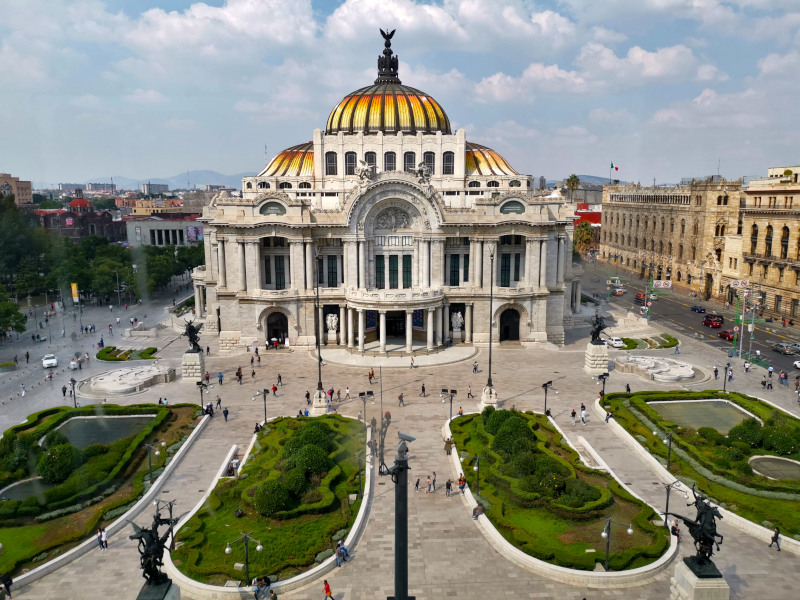
2. Use Ride Sharing Apps
Depending on where you are in the world ride-sharing apps such as BlaBlaCar can be a great way to travel cheap without a car. It’s also the cheapest way to travel by car.
How it works? If someone is driving somewhere and they have a spare seat in the car they put an ad up. The ad will show the price for the ride, the departure time, and the pick-up point. You can pay via the app or at the pick-up point.
Ride-sharing can often be faster and cheaper than public transport plus you will spend time with locals or other travelers on board.
BlaBlaCar is a great option to travel cheap in Europe and Latin America . We used it many times in Mexico and it was usually faster and more comfortable than the bus. You just have to make sure your driver is trustworthy (check the reviews) and shows up.
Another ride-sharing app you can try is Indrive which works more like Uber 👇
3. Book in Advance
This is no secret but can’t be missed on a list of how to travel cheap. If you book in advance you follow the most cost-effective way to travel. Whether it’s booking flights, buses, or trains it is usually a lot cheaper if you book ahead of time.
By booking our flights to New Zealand 8 months in advance we saved at least 500 USD per person one-way! You just have to commit and stick to it.
Our favorite transport booking sites: ✈️ K iwi.com 🚊 Trainline 🚌 Busbud 🚗 Rentalcars.com 🚲 Bikesbooking.com 📲 Omio (Transport Search Engine)
4. Be Flexible with your Dates
This is one of the biggest mistakes that I have seen people make when booking flights. If you want to get cheap flight tickets then being flexible with your date is one of the biggest money-saving hacks there is!
A lot of people will decide that they are going to fly out on a certain date and only check flights for this day. But especially on long-distance flights you can save hundreds if you are flexible and also look up flights a few days before or after your desired travel date.
That’s why whenever I am searching for flights I use the flight search engines Kiwi.com or Skyscanner as they allow me to search by month. You will be shown a calendar with the price for each date. Then I choose the date that works the best for me with the best price!
How to search per month? ✈️ 1. Go to Kiwi.com or Skyscanner 2. Choose One-way or Return 3. Fill in From and To 4. Click on Departure 5. Click on the gray button above the calendar that states the month 6. Click on Set Dates and Explore and voilà you will get shown the cheapest flight days in the selected month for your destination!

👉 Try it yourself 👈
5. Be Flexible with your Destination
Being flexible with your destination is one of the best ways to travel cheap. This tip will allow you to save money by being adventurous and spontaneous.
On Kiwi.com and Skyscanner you can select “Anywhere” as your destination. If you do this for a particular date or month it will show you the cheapest places to go traveling leaving your departure city.
This way you may find some extremely cheap travel options you may not have considered. The first time I tried this I was in Copenhagen and the cheapest buses or trains to interesting destinations close by were around 80 USD.
But then I found a flight to Belgrade, Serbia for 15 USD! So I went to Belgrade and had a great time. If it wasn’t for the super cheap flight I never would have gone there. So being flexible and adventurous can be super fun and saving money at the same time.
How to search Anywhere? ✈️ 1. Go to Kiwi.com or Skyscanner 2. Choose One-way or Return 3. Fill in From 4. Type “Anywhere” in the To field 5. Select departure (you can use the monthly hack as described above!) 6. Hit Explore and voilà you will see the cheapest flight destinations for your departure city
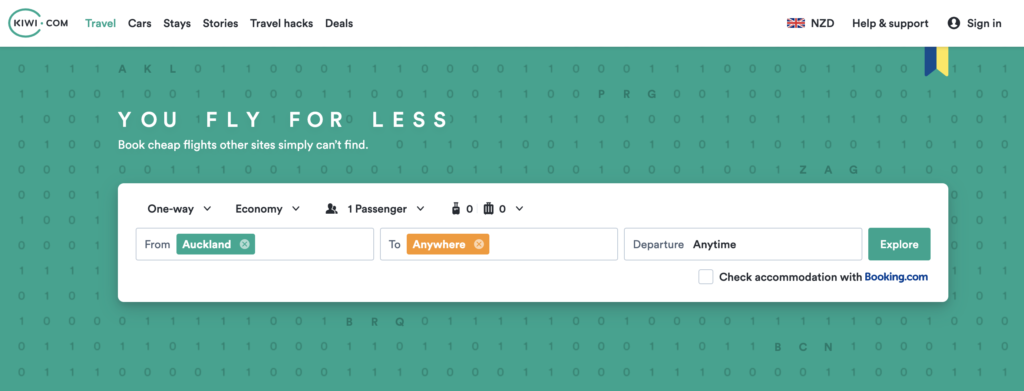
6. Avoid Peak Season
The prices for flights and accommodation in the peak travel season of any destination often increase dramatically. So travel smart and off-seasonal!
Most travelers avoid the off-season because that’s often the “bad weather season” . But we have spent months in rainy seasons and it was way sunnier than people would expect.
Going to beach destinations outside the high season is not only cheaper but the experience is much better. There are usually far fewer people and a more relaxed atmosphere.
Particularly if you are a digital nomad there is no reason to be somewhere in peak season as you can move where and when you want. So do your research and try to travel as much as possible in low or mid seasons.
Read here: Best off-the-beaten-path destinations 🤫
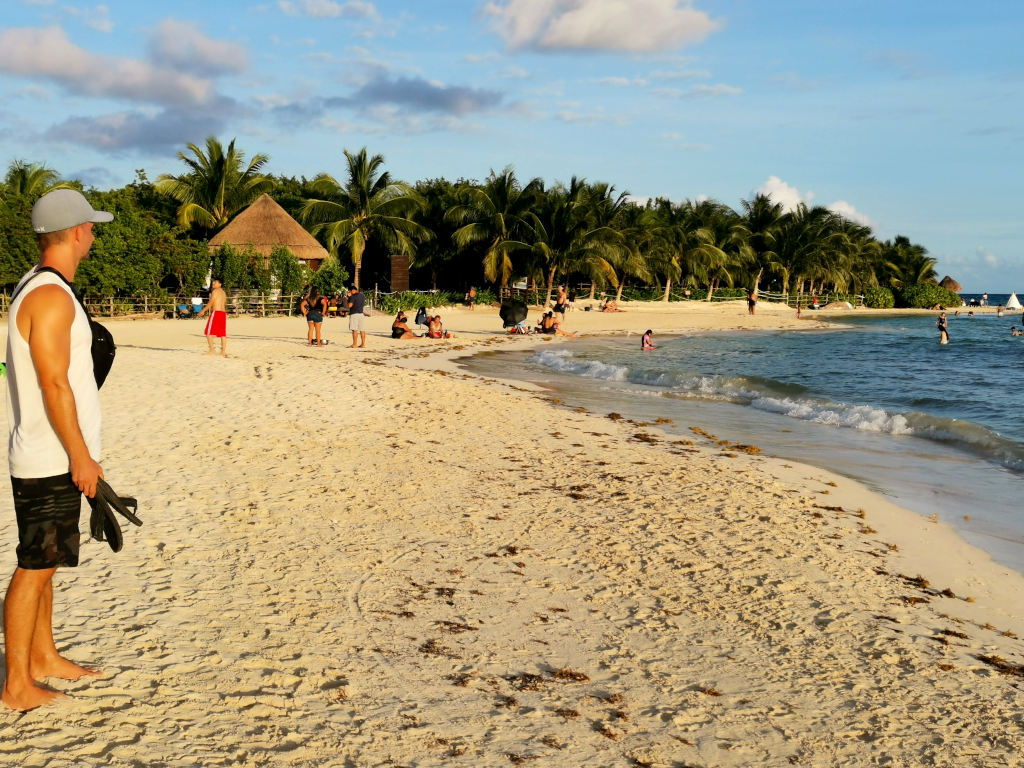
7. Pack Light
Many people bring way too much luggage on their trip. But even a 2-month trip can be done with carry-on if you get creative and pack smart. Our tip is: Pack as if you would go on a 7-day trip. Just because you travel longer doesn’t mean you need more stuff or clothes.
After years of full-time traveling, we found that we don’t need much more on a 1-year trip than on a long weekend trip. Assuming you don’t go to super cold countries. Everything you haven’t used in 7 days on your trip can be removed from your luggage. Try it out!
Why? Airlines charge as much as 50 USD one-way for 1 piece of check-in luggage. We have even seen trains and buses charging for luggage. So if you take multiple trips a year saving that money per trip will help you cut down costs.
Traveling light will also free you up when moving around and put less strain on your body. Plus, without check-in luggage, you save time at the airport before and after departure.
Afraid of losing your luggage or want to insure your electronics? Check out SafetyWing travel insurance. It’s cheap! Read about our experience plus other options here 🎒 Or calculate your fee easily here 👇
8. Change Home Country on Skyscanner
This is a tip that I discovered by accident while using Skyscanner . While in Mexico the home country of my account was set to the UK. I randomly decided to change it to Germany to see what happened and the prices all became cheaper!
You will have to play around and try different countries . But it can quite often lead to saving a bit of money which adds up and allows you to travel cheap like a pro.
How to change the country on Skyscanner? ✈️ 1. Go to Skyscanner 2. Click on the Earth symbol in the right-upper corner (next to Login) 3. Change the Country/Region and search for flights 4. Do this multiple times to compare prices 5. Optional: Play around with the Language and Currency Settings e.g. select “Spanish” and “Pesos” when looking for Mexican destinations 6. And voilà you may find the same flight 50 USD cheaper!
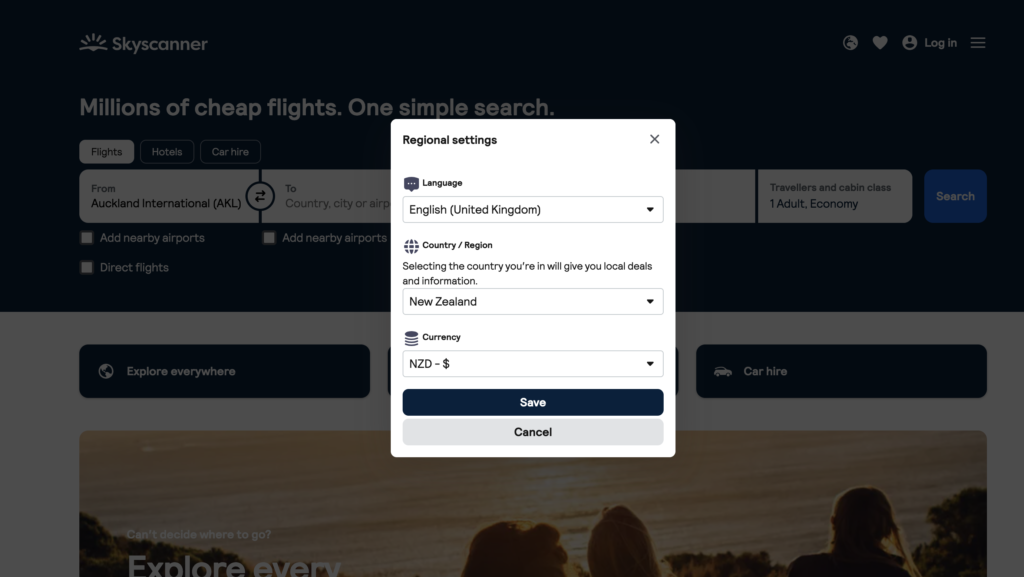
9. Use Incognito Mode when Booking Flights
You may have noticed that when you return to flight search engines such as Kiwi.com or Skyscanner a short time after you looked up flights there the prices have gone up!
This is because websites keep cookies when you visit the site and if you return they raise the prices on your browser. This is to make you worry that the prices will go up even further and you will buy the tickets straight away.
But if you switch to Incognito mode on Google Chrome you will find that the prices stay the same. Even better would be to use a VPN but Incognito mode helps on a basic level.
How to switch to Incognito? 🕵️♀️ 1. Click on the 3 vertical dots on the upper right-hand side of Google Chrome (next to your profile pic) 2. Click on “New Incognito Window” and voilá you can now go to Kiwi.com or Skyscanner and start comparing prices incognito – works on the phone too!
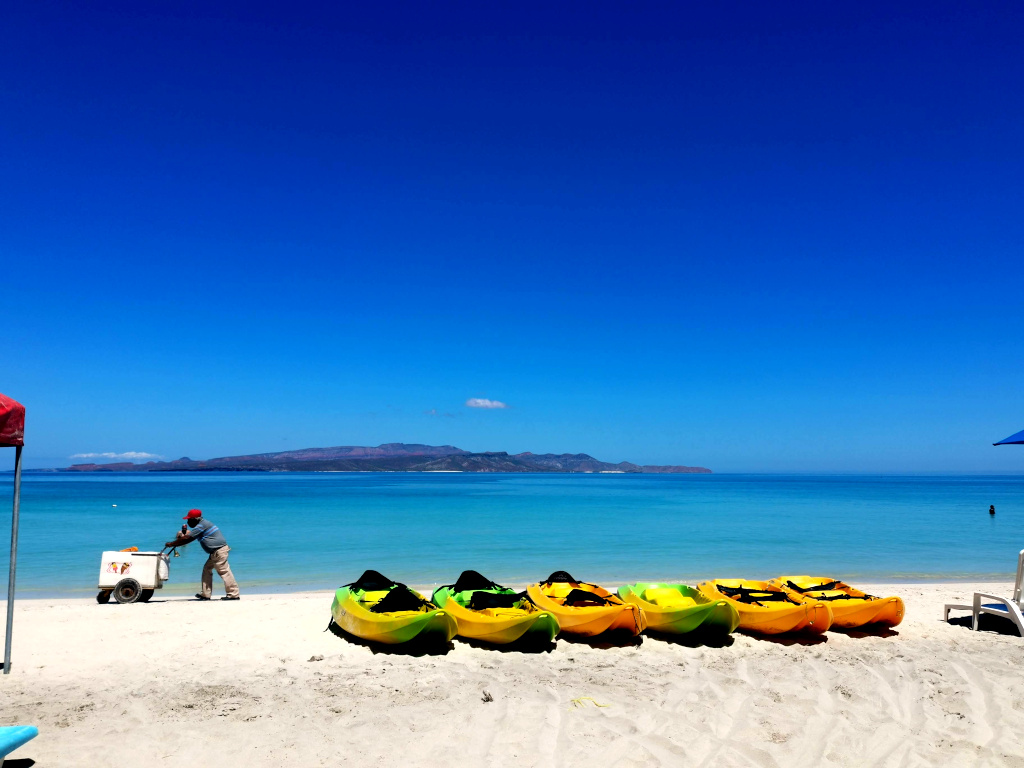
10. Take Cheap Public Transport
When you are in a new city it can be daunting to figure out the public transport system. Especially if you can’t speak the language. But taking taxis and Uber everywhere will get expensive very quickly in most countries.
I challenge you to take public transport at least once if it is safe. It’s the cheapest way to travel long distance and you get a better idea of what local life is like. In Latin America and Asia, a public transport ride in a city often costs less than 50 cents!
But in some areas such as Cape Town , Uber is so cheap it is by far the best and safest option, plus their public transport is terrible! So you will have to learn as you go but give public transport a go (especially to and from the airport!) whenever possible.
Read also: Best digital nomad destinations 🧑💻

11. Check Taxi Prices ahead of Time
If you are in a new country and you can’t book an Uber it is always good to know how much a taxi should cost before stepping into one. Taxis at airports are one of the most likely places for you to be ripped off.
Ask a local or at the hostel reception how much a ride should be or google ahead of time. This will save you money but also a lot of stress, especially after a long-distance flight.
🚕 Another ride-sharing app you can try instead of a taxi is Indrive which works like Uber but you set the price 👇
ACCOMMODATION 🏠
12. stay in hostels.
My number one tip to save money particularly if you are traveling solo is to stay in a hostel. Not only are dorm beds way cheaper but you have the chance to meet fellow travelers and make friends along the way.
Some people do not like to share a room with strangers and I won’t lie you will have to sacrifice some comforts. It is also highly likely you will have someone snoring next to you. But some of my greatest travel memories came from staying in hostels!
Also if you are traveling with someone else, a lot of hostels have private rooms that are often cheaper than hotels. Sometimes they are even cheaper than two bunk beds in a dorm. So depending on the hostel they can be a cheap way to travel as a couple.
We book most our hostel stays on Hostelworld 👇
13. Check Multiple Booking Sites
I have always found that when booking accommodation prices can vary quite drastically between booking sites. So when trying to book a cheap hotel or a guest room, always check multiple sites including their own website!
For booking hostels I recommend Hostelworld and Booking.com . Sometimes it is cheaper on one or the other. Sometimes Booking.com will also have private rooms to rent in people’s homes, similar to Airbnb but cheaper.
Our favorite accommodation booking sites: 😴 Booking.com (Hotels) 🛌 Hostelworld (Hostels) 🏠 Airbnb (Private rooms) 🌎 Expedia (Search Engine) 🌎 Agoda (Search Engine) 🌎 Trip.com (Search Engine) 🌎 Tripadvisor (Search Engine)
14. Use Airbnb right
Airbnb is one of the most used booking sites for finding a room or a whole place to stay. But if you don’t use it right it can quickly burn a hole in your wallet. We have 2 hacks we always use to find the cheapest price:
Always check and compare how much your stay would be if you booked for 1, 2 or 4 weeks instead of 5 or 10 nights for example. That way we got once 92% off! No kidding. In Antigua, Guatemala our Airbnb would have cost about 45 USD a night but since we booked for a month we got it for 120 USD in total!
That’s an incredible example and doesn’t happen often but almost every time we booked 1, 2 or 4 weeks instead of less we got up to 1 week stay for free! That’s because most hosts give weekly and monthly discounts . Off-season that can easily be up to 50%! Stays under 1 week are mostly the most expensive stays, so always try to round up.
When looking for the cheapest options use the Airbnb integrated map. But make sure you filter for the price , for example, max 30 USD a night. That will drastically reduce the search results and show only the cheapest accommodations.
You can play around with the price depending on the destination. Go for the lowest possible price per night and work your way up. We found that if you look on the map without this filter the cheapest places are often hidden by the more expensive ones and don’t even show up!
Extra Tip: Make sure you book an Airbnb with kitchen access so you can cook your own food and make a coffee – that will reduce your spending big times!
Read also: Cheap & healthy food hacks for travelers 🥑🤫

15. Do Couchsurfing
Couchsurfing is a great option to get free accommodation if you are interested in meeting locals and don’t mind sharing a space with another person.
On the Couchsurfing website hosts will offer to sleep at their place for free . This will often be a couch, a mattress, or a spare bed. No strings attached!
But it is considered good manners to do something nice in return to the host like cook them some food or cover a drink but this is totally optional.
I used Couchsurfing in Norway as all accommodation prices were super expensive and it ended up being a great experience . So I can highly recommend it!
Read also: 5 Ways to get free accommodation 🏠

16. Volunteer on Workaway
Workaway is an online platform where you can get free accommodation in exchange for volunteer work. That can be farm work, animal care, hostel work, gardening, etc.
The accommodation can vary from a bed in a dorm room to your own studio with its own kitchen. But you will find all the details in the host’s ad.
We used this platform to travel around Mexico for several months and not pay for accommodation once. We would spend a minimum of 1 month with each host doing babysitting, artwork, and helping with rental properties and tours.
Workaway enables you to travel for free and get paid occasionally! Its main intention is to work without payment in exchange for a place to sleep but we earned some pocket money by doing extra work for our hosts. Try it out!
Read also: How to secure a gig on Workaway 💪
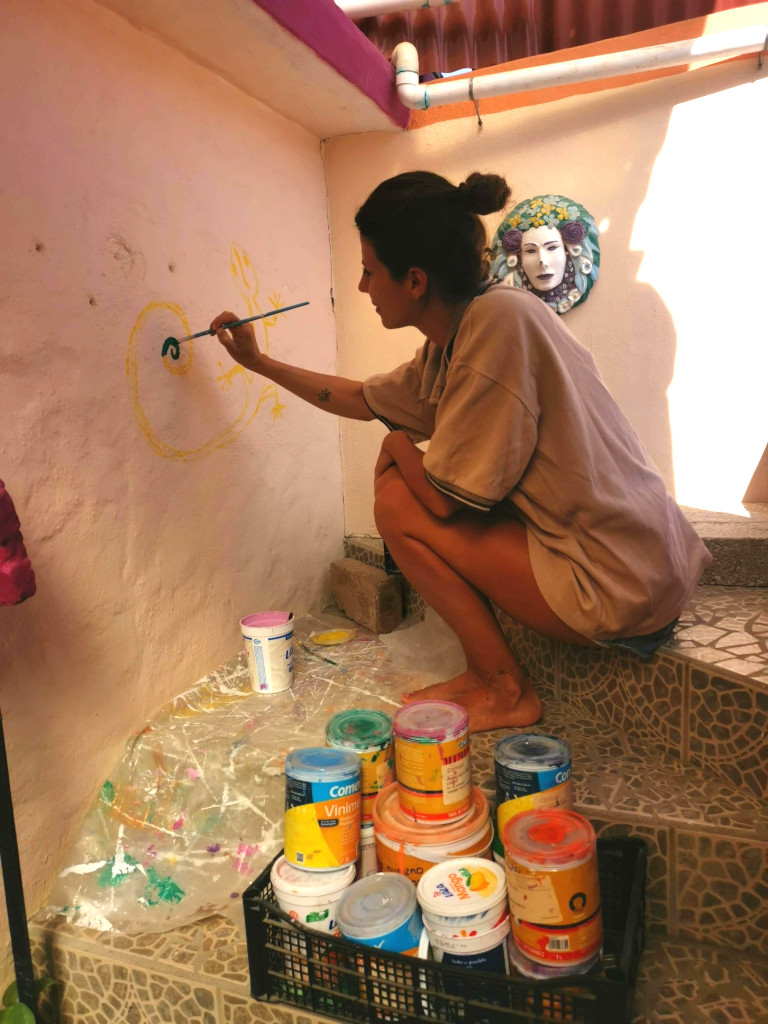
17. Do Pet sitting (Our Favorite Way to Travel Cheap!)
If you love pets then pet sitting is a great way to get free accommodation . In return for looking after the owner’s pets, you will get to stay at their house while they are away.
Of course, you should only do this if you love pets! The hosts are putting their trust in you so you should only apply if you truly like spending time with animals. Plus it can be quite a lot of work depending on the sit. But is also fun and rewarding, we love it.
There are several sites where homeowners look for pet sitters including Facebook. But after trying a few we found TrustedHouseSitters to be the best! No matter if you are traveling solo, as a couple or family, or with your own pet you will find a sit.
We find pet sitting is perfect for digital nomads who are looking for how to travel cheap on a budget. Through TrustedHouseSitters, we have had the chance to stay in amazing homes around the world for free: Caribbean, Mexico, Spain, London – just to name a few!
Sign up to Trusted House Sitters via this link for free + use code HAPPYHEALTHYNOMADS at checkout for a 25% discount on your yearly membership! 🐶 Read about our experiences here.
18. Use Facebook Marketplace
In any countries around the world like Latin America looking into Facebook groups can be a good place to find cheap accommodation, particularly for long-term rentals.
While in Mexico we saw that many people listed their properties for rent on Facebook marketplace. They were much cheaper than Airbnb as long as you want to stay long-term.
Facebook groups are also a great place to look for tips and advice when moving to a new city. If you are a digital nomad looking up the local Facebook page of a city is a helpful place to find the best areas to live, food tips, doctors and connect with other newbies.
Overall Facebook can be a great way to enrich your travel experience and allow you to travel cheap if you use it in the right way.
Want to share a meal with locals? Check out Eatwith where locals host a traditional meal in their home 🍽️ Not as cheap as cooking yourself but an experience 👇
FOOD 🌮
19. cook on the road.
Enjoying the local cuisines is one of the best parts of traveling. But in most countries, you are going to save a lot of money by cooking your meals at home rather than eating out.
When we are looking for accommodation even if it is just for a few days we always make sure there is a kitchen to use. Then once we arrive we ask around and find out where the cheapest supermarket or local market is and load up on groceries.
Not only does this save you money but it ensures that you can cook fresh & healthy. Whereas if you are eating out it can be a lot harder to find healthy meals for a good price.
Tip: Master a few dishes, for example, a simple lentil pot with ingredients that are found everywhere in the world and don’t take too long. We always travel with a small bag of curry powder so we can cook a tasty meal no matter where we are.
Read also: 10 Easy Hacks to Eat Healthy & Cheap while Traveling 🥑

20. Make Coffee at Home
When I first started traveling I would always go out and grab a couple of coffees a day. But soon I realized that the cost of buying them daily quickly adds up . Plus, the coffee often wasn’t even that good and takeaway isn’t sustainable.
Now I always make coffee in the morning wherever I am staying. I only head out to a cafe on special occasions or if I need a place to work. This way I enjoy it much more and save a bunch of money.
Also if you want to travel cheap stay away from Starbucks! Their coffees are expensive and not that great. If you are going out for coffee while traveling head to a local cafe , try some locally grown beans, and enjoy every sip.
We learned all about coffee in Latin America : 🧑🌾 From Tree to Cup: This is how Coffee is made! ☕️ 12 Best Cafes in Laureles, Medellin ☕️ 14 Best Cafes in Antigua, Guatemala 💛 Do you like our tips? Say thanks with a coffee here!

21. Travel with a Reusable Water Bottle (Sustainable Way to Travel Cheap)
This tip is both a sustainability tip and a money-saving tip. So often when I am traveling I see people buying multiple bottles of plastic water daily. Not only is this adding insane amounts of plastic waste into landfills but the cost adds up over time.
We always travel with reusable bottles that we fill up at our accommodation and carry with us. This is a cost-effective way to travel and you are being eco-friendly at the same time.
Tip: Get a 1l-water bottle from Nalgene . We always travel with one. They are cheap, durable, lightweight, and easy to carry on hikes 👌

22. Stay Away from Touristy Restaurants
The areas with the most tourists have generally the most expensive restaurants. The food is often also not that good and other tourists will surround you.
You will find that food prices drop dramatically by walking a couple of blocks away from the main tourist area. Look for places that are full of locals as they generally know where the best food is.
Also, don’t be afraid of street food! When people first go traveling they often stay away from it because they are afraid of getting sick. But street food is super cheap and delicious! Also in my experience, you are more likely to get sick in restaurants than from street food.
At street food stalls you can at least have a close look at the food storage and preparation method. Often you can watch them cook! Plus it’s the most authentic local experience you can get for a really cheap price.
Read also: Best cheap foodie destinations 🌮

23. Look for Free Breakfasts
When booking hostels it can often work out cheaper to book a hostel that is slightly more expensive if it comes with a free breakfast and coffee. It’s a cheap way to vacation.
Another bonus is that you save time by not having to make breakfast or end up spending a lot of money on it. Plus you get the opportunity to meet other travelers and may end up spending the whole day with them.
The only downside is that free breakfasts are usually made of super cheap unhealthy ingredients so make sure to fuel yourself the rest of the day with healthy food!
How to find free breakfasts? 🍳 1. Go to your booking site of preference e.g. Hostelworld 2. Choose your destination, dates and hit Search 3. Click on Filter and “Free Breakfast” 4. Voilá you will see all places with free breakfast
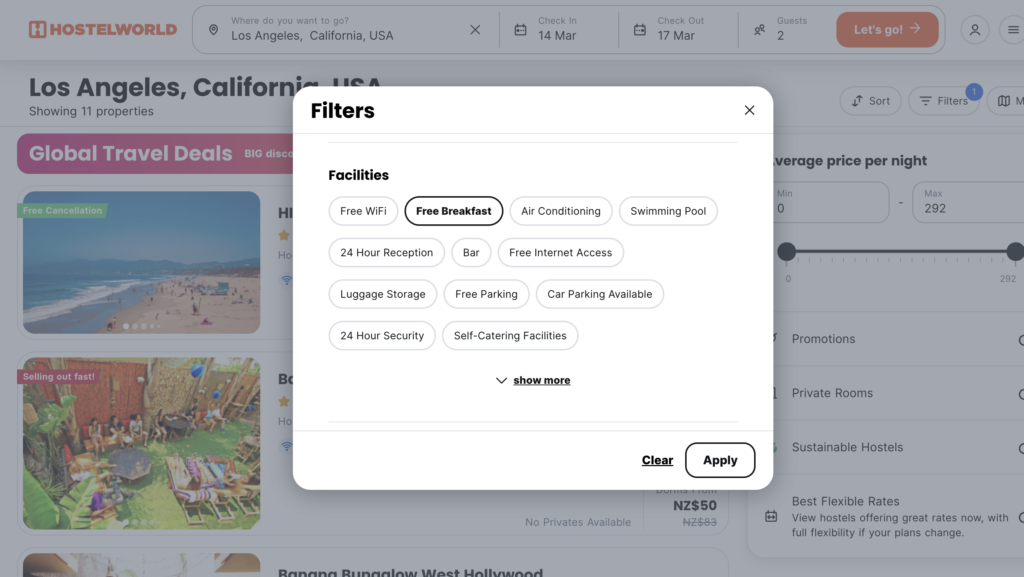
Try it yourself 👇
24. Bring Fruit & Nuts as Snacks
One of the hardest things to do on a long bus trip or while waiting at the airport is to resist buying snacks . Not only are they unhealthy but also expensive.
So avoid this money trap by planning ahead . We always bring local fruits, nuts and protein bars on our trip. And never ever buy food or drinks on airplanes!
It is a cheap way to travel and is far better for your health. Eating healthy while traveling can be a struggle but adding healthy snacks will make a big difference.
Read here: Tips for cheap healthy snacks 🍎

ACTIVITIES 🥾
25. google free things to do.
When I visit a new city I will always google free things to do there. Someone will have written a blog post (like us! ;)) about free things to do in nearly every touristy place around the world. They can have some awesome ideas that are totally free.
Another good idea is to google free events in the city you are in. There can often be festivals or cultural events that are free to visit and will make you feel like a local.
See here: All Free-Things-to-do articles we have written ✌️
26. Visit Museums Cheap or for Free
In a lot of countries, museums will have certain days when they are free to visit, often on Sundays. Just look up their website and go for free where possible. This way we have saved quite some money without missing out on cultural highlights.
If you are a student, always make sure to bring your student pass with you. Many museums offer university discounts making it a great way to travel cheap as a student.
In big cities, like Chicago , London, or New York it can often be worth it to get city passes that give you discounts on many attractions and save you time queuing. Sometimes you may get as much as 50% off admission!
Our favorite ticket websites : 🎟️ GetYourGuide (entries) 🎟️ Tiqets (attractions) 🎟️ GoCity (passes) 🎟️ Ticketmaster (events)
27. Join Free Walking Tours
Free walking tours are available in most major cities around the world. They are often hosted by a local guide who can give a brief history of the place and interesting facts.
I have done an uncountable number of free walking tours worldwide and besides one or two I found them to be a great and cheap way of getting to know a new place.
While they are not really free as the guides work for tips it is up to you how much you tip. So those on a bigger budget can choose to tip more, and if you are strapped for cash, you can tip less.
Our favorite tour guide sites: 🤠 Google “Free Walking Tour + City you are in” 🤠 GetYourGuide 🤠 Viator
28. Go on Self-Guided Walking Tours
One of my favorite things to do when I arrive in a new place is to just go for a walk without any destination in mind. A good idea is to google a few nice areas and download them on Google Maps offline before starting to walk.
That way you will discover interesting parts of the city you would never have seen if you had just stuck to the main tourist attractions. Plus it’s completely free!
Our favorite self-guided sites: 🗺️ Google Maps (works offline) 🗺️ Maps.me (works offline) 🎧 WeGoTrip (Audio Tours)

29. Avoid Pricey Tours
Try to avoid organized tours when going to major tourist attractions . Frequently I see overpriced tours offered that don’t include little more than transport.
So often it is so much cheaper to take public transport to the attraction yourself. Plus you can take your time at the sites and not have to rush or stick to the schedule of the tour.
Of course in some situations, tours can work out to be cheaper or better, especially as a solo traveler. But it always pays to compare the price of a tour vs doing it on your own.
Our favorite tour websites: 🤠 Viator 🤠 GetYourGuide 🤠 Tripadvisor
30. Go Hiking (Healthy Way to Travel Cheap)
Going for a hike is an activity that is mostly free and has the added benefit of staying in shape and getting into nature. It is easy to get stuck in big cities while traveling.
Especially as a digital nomad you may be living in exotic locations but glued to your laptop all day. Hiking is a good way to escape the city and your laptop and see more of the natural beauty of a country.
There are plenty of free hiking sites out there that will show you hundreds of cool hikes for all fitness levels nearby. Often with trails away from tourist crowds.
Tip: In countries where safety is an issue, always make sure to check the hike reviews on the sites or on Google Maps (filter by lowest) to see if incidents on the trail have happened in the last few months. That way we stayed away from some doggy hikes in Colombia.
Our favorite free hiking sites: 🥾 AllTrails 🥾 WikiLoc See also: All hikes we have blogged about 🌎
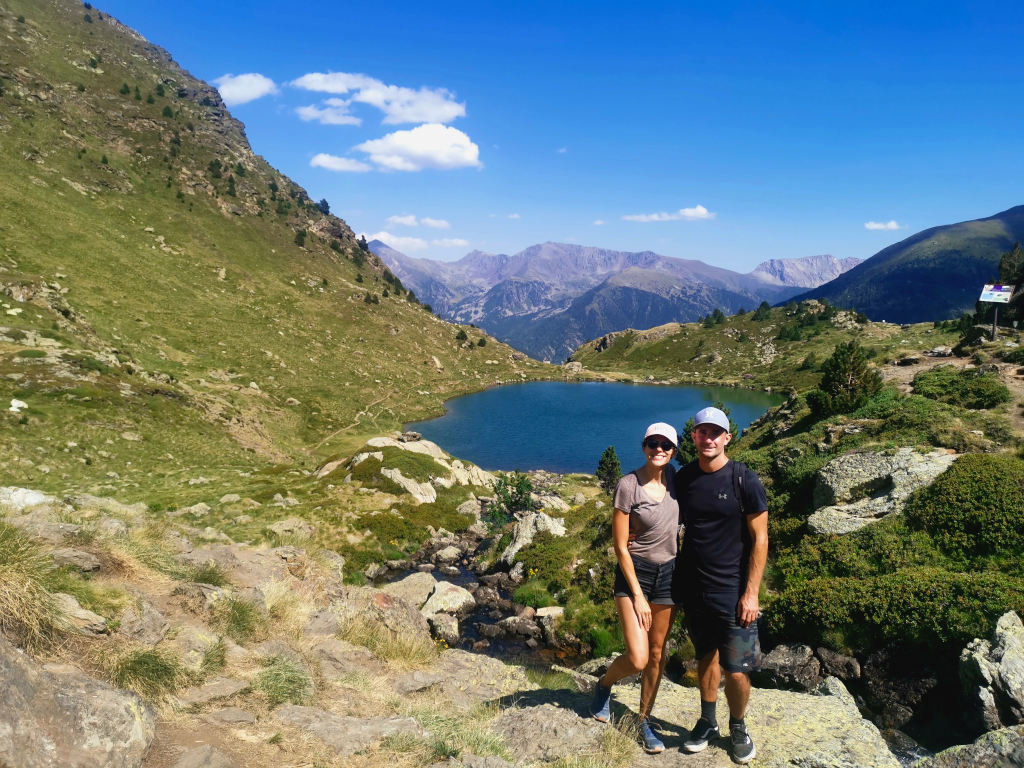
31. Work Out for Free
While traveling it is very easy to slip out of your workout routine and become unfit. Also in many countries day passes to gyms can be very expensive.
That’s why the best idea is to learn workout routines that require no equipment and can be done anywhere. There are thousands of videos on YouTube with routines that you can follow anywhere simply with your body weight.
My favorite way to workout is to go for a run or do calisthenics as there are free calisthenics parks in almost any city in the world. It can also be a great idea to buy some cheap workout equipment you can travel with.
For example, we travel with a lightweight yoga mat , resistance bands, and a skipping rope that you can get a great workout with and easily fit inside your luggage.
Read here: Best Free Workout Tips for Travelers 💪
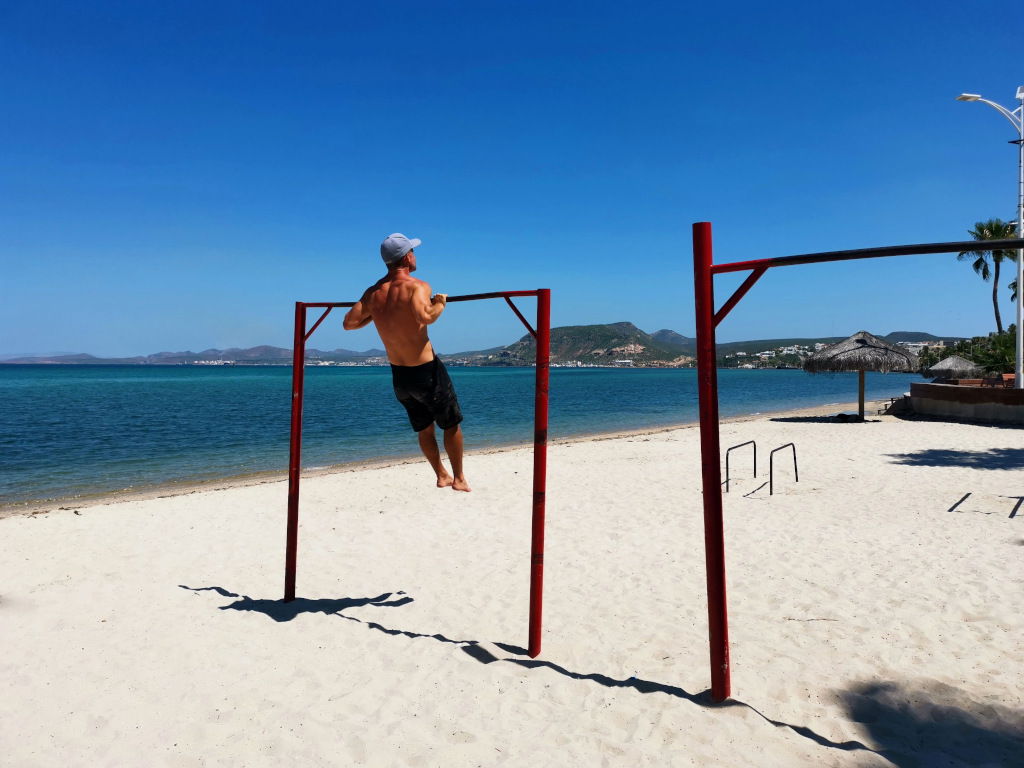
Now you know how to travel cheap, yeah!
Everyone has different wants and needs, especially when it comes to traveling. Someone might not want to sacrifice certain things. But even if you only incorporate a few of the tips on this list you should be able to get more bang for your buck.
So much of travel is learning by doing and finding out what works for you! I hope this list helps you save money and enables you to extend your travels so you can spend more time doing what you love 🙌
If you have any more tips on how to travel cheap let us know in the comments below! We would love to hear them.
- Guide to Free Accommodation
- How to Eat Cheap & Healthy
- How to Stay Fit on the Road
- How to Become a Petsitter
- Share on Twitter Share on Twitter
- Share on Facebook Share on Facebook
- Share on Pinterest Share on Pinterest
- Share via Email Share via Email
About Allan
Hi, I am Allan, a travel, health and fitness fanatic from New Zealand. I'm a former lawyer who turned into a full-time nomad in 2020. For the last 4+ years I've been traveling the world. I'm always on a hunt for local food, activities on a budget and workouts on the go. I hope you find my tips helpful and get inspired to travel more!
Related Posts
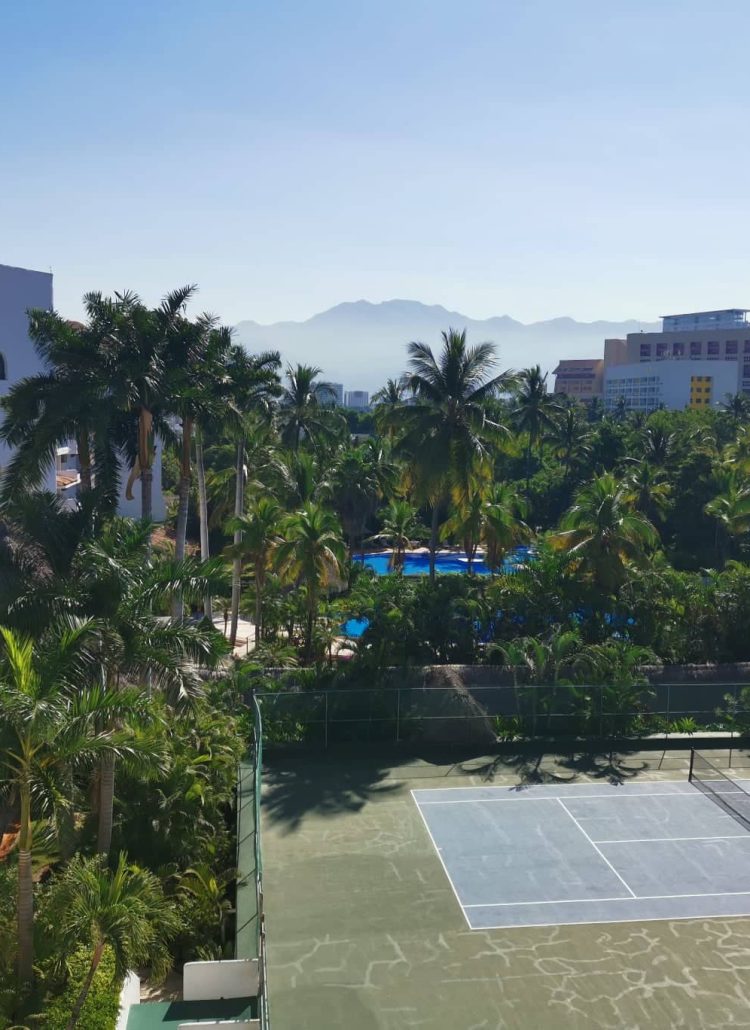
Join the List
Stay up to date & receive our latest posts in your inbox.
Reader Interactions
Leave a reply cancel reply.
Your email address will not be published. Required fields are marked *
Save my name, email, and website in this browser for the next time I comment.
Notify me when someone replies to my comment
On the Blog
- Destinations
- Explore Topics
- Latest Posts
- Budget Travel
- Travel Tips
- Privacy Policy
Travel inspiration
Get new posts & tips straight into your inbox!
Copyright © 2024 Happy Healthy Nomads · Theme by 17th Avenue

- Australasia
- Central America
- North America
- South America
- Buenos Aires
- Mexico City
- New York City
- Rio de Janeiro
- Overwater bungalows
- Cruise tips
- Sightseeing Passes
- Attractions
- Theme parks
- When to visit where
- Backpacker Indexes
Sign up for our monthly Priceoftravel newsletter
11 Best first-time Europe itineraries for 1, 2, or 3 weeks
Europe is going to be very busy in the summer of 2024 as the world is back to normal and travel demand is higher than ever. One other key factor is that most European currencies are still hovering at lower levels historically compared to the US dollar, which means that Europe will feel somewhat cheap again this year. In fact, according to our World Backpacker Index , European cities like Lisbon, Madrid, and Munich are about 30% cheaper to visit than Boston, Chicago, and New York City. In other words, flying to Europe might seem expensive, but most things will be cheaper once you get there compared to the costs of visiting a large US city.
Below you’ll find 11 of the most popular and best itineraries for a first visit to Europe. Your first visit is not really the time to be different or creative, and the famous destinations tend to be popular for a reason. In other words, it’s kind of silly to visit, say, Bulgaria, if you’ve not yet been to France or Italy. I lay out the best options along with how long to stay in each place as a general guide. I also discuss Mediterranean cruises, which can actually be an amazing way to see a lot of Europe on your first visit, especially if you don’t like going back and forth to train stations and airports every 2 or 3 days.
For a bit of fun you might be interested in the cheapest 5-star hotels in Europe , which start at US$80 per night for really nice hotels. It helps show that if you choose some of the cheaper cities, you can treat yourself to some luxury that you can’t afford in most other places.
This article was last updated in March, 2024.
There are 11 starter itineraries described in detail below
- Classic London and Paris
- England and Scotland
- Paris and Italy
- Mediterranean cruise
- France, Belgium, and Netherlands
- Paris and elsewhere in France
- Switzerland
- Best of cheap eastern Europe
For each itinerary there are suggestions of other destinations that are easy to add on to the main cities.
Note: This article was most recently updated in March, 2024
Building the best itinerary for your first trip to Europe
Below there are 11 popular itineraries for one week in Europe. If you’ve only got a week then choose one of them and assume you’ll return again to conquer more of this amazing part of the world. If you’ve got more time then you can choose from some of the top add-on suggestions for each one.
Start in the most famous cities
Your first visit to Europe is no time to try to be different or edgy. I recommend that you focus on these 5 great cities before you start branching out into cheaper or more obscure places.
Keep your travel days to a minimum
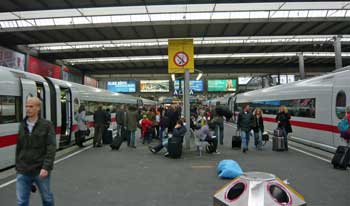
Spend 3 (or 4) nights in almost every major city
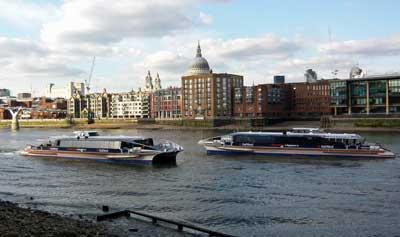
So many first-time visitors are initially planning on spending only 1 or 2 nights in major cities that I wrote a detailed explanation of why 3 nights is ideal for almost all European cities , even if you want to see as much as possible.
3 (or 4) nights will be enough for any city on your first trip
Most first-time visitors are tempted to move too quickly, but it can also be a mistake to move too slowly. It’s really amazing how much you can see in two full sightseeing days. If you spend too long in one city you’ll end up seeing things that are way down your list, while you could be in another city seeing things at the top of your list there.
Choose cities that are easy to reach from each other
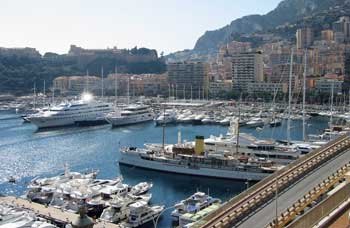
For your first trip it’s best to visit cities that are no more than a 5-hour train ride apart.
Choose cities that are connected by reasonable train rides rather than flights
To build on the point above, finding cheap flights within Europe is easy, but train travel is about a million times more enjoyable and less stressful. You’ll enjoy the train rides almost as much as the cities, so focus on places that are within 5 hours of each other by train.
Start with one of the classic itineraries below, and then add to it if you have more time
If you only have 7 days then you’ll find a list below of classic itineraries that are well-suited to a first visit to Europe. Hopefully you have more than 7 days though, and if you do you can add in one or more of the suggested add-on cities to build an itinerary that appeals most to you.


Best 1-week itineraries for the first time in Europe
Itinerary 1: classic london and paris.
- London (3 or 4 nights)
- Paris (3 or 4 nights)
Fly into either city and take the 2-hour Eurostar train between them
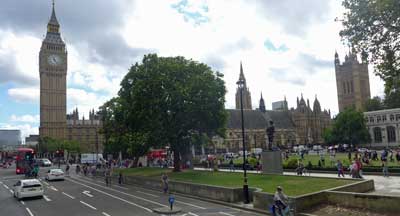
London highlights
- Big Ben and Parliament
- Westminster Abbey and St. Paul’s Cathedral
- Tower of London and Tower Bridge
- West End shows (Broadway equivalent) and classic pubs
- Buckingham Palace and Windsor Castle
Paris is actually far more beautiful than London and the food is famously much better as well. Since Paris gets so many tourists from non-French speaking countries, it’s easy to get by on just English, and the Metro system makes it fast and easy to get around. The architecture of both cities is amazing from the Tower of London, Big Ben, Westminster Abbey to the Louvre and the Eiffel Tower. These cities each pack a huge punch and they are very different from each other as well. Actually, England is arguably the best choice for your first trip to Europe .
Paris highlights
- Eiffel Tower
- Louvre Museum and Museum de Orsay
- Arc de Triomphe and other monuments
- Montmartre neighborhood and Sacré Coeur Cathedral
- Probably the world’s best affordable restaurants and wine
Best add-ons to London and Paris
- Edinburgh (2 or 3 nights, from London)
- Amsterdam (2 or 3 nights, from Paris)
- Bruges and Brussels (2 nights, from Paris)
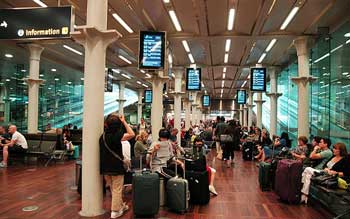
>>> Best one-week London and Paris itinerary in detail >>> Check London hotel deals >>> Check Paris hotel deals
Itinerary 2: England and Scotland
- York (1 night)
- Edinburgh, Scotland (2 or 3 nights)
- Inverness, Scotland (2 or 3 nights)
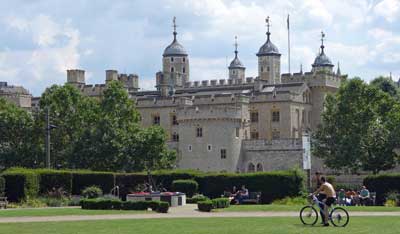
York is a small Roman city with intact city walls and one of the most famous cathedrals in Europe. Edinburgh is not only the capital of Scotland, but it’s easily the second most interesting city in all of Britain. If your time is short, skip York and spend more time in Edinburgh.
If you prefer to focus on the south of England on your first trip then the best option is to go to Bath or nearby Bristol after London. Bath is another of England’s top destinations and it’s a gorgeous city that has been a spa resort for many centuries. It’s also reasonably close to Stonehenge. You can also easily get to Cornwall in England’s southwest corner from Bath, and that’s a whole different and fascinating experience (with nicer weather than up north).
If you’ve got more than a week and want to spend more time in Scotland, especially in the summer months, the place to head to is Inverness. It’s a small town that is considered the gateway to the Scottish Highlands, but it’s an interesting and charming place on its own. You can take day-trips by bus to the highlights of the Highlands including the Isle of Skye and Loch Ness. Between you and me, it’s better to minimize time in Loch Ness or skip it altogether because it’s not one of the more photogenic parts of Scotland and the monster has always been a hoax.
Travel times between the recommended places
- London to York by train: 2 hours
- York to Edinburgh by train: 2.5 hours
- London to Edinburgh by train: 4 hours
- Edinburgh to Inverness by train: 3.5 hours
- London to Bath by train: 85 minutes
Best add-ons to England and Scotland
- Paris (3 or 4 nights from London)
- Amsterdam (3 nights from Paris)
If you think you want to spend your whole trip in Britain you should have a look at our article on the best itineraries in England, Scotland, and Wales .
>>> Check London hotel deals >>> Check Edinburgh hotel deals
Itinerary 3: Paris and Italy
- Paris (3 or 4 nights)
- Venice (1 night)
- Florence (2 or 3 nights)
- Rome (3 nights)

From Paris you can easily fly to Venice (or nearby Treviso) where you should try to spend about 24 hours. Venice is small enough to see in a full day, and so crowded that most people are satisfied to leave after that day. The key is to stay in the main part of the main island so you can enjoy Venice before the cruise passengers and day-trippers arrive, and also after they leave for the day. Two nights in Venice would not be wasted time, and it’s possibly the most gorgeous city in the entire world, but you can see the best of it in a bit over 24 hours.
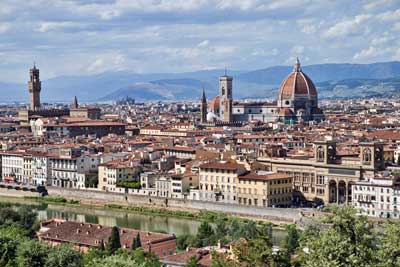
Rome also lives up to the hype and spending a day in the Vatican City will be a highlight even for non-Catholics, but it’s also a crowded and busy city so three days is usually enough for most people. Similar to Paris, Rome is an unusually beautiful city from almost any angle when you are in the historical center. You’ll walk through a stunning piazza (town square) and then turn a corner and you’ll see gorgeous buildings or public statues that are as nice as anything in the museums. Seriously, it’s worth a visit.
Paris to Venice flight: 1 hour 35 minutes Venice to Florence by train: 1 hour 53 minutes Florence to Rome by train: 1 hour 16 minutes
You can of course instead fly from Paris to Rome and then go north to Florence and then to Venice and fly home (or back to Paris) from there, and it would be just as enjoyable.
Best add-ons to Paris and Italy
- Nice/Cannes/Monaco (2 or 3 nights)
- Avignon (2 nights)
- Bourges (2 nights)
- Bordeaux (2 nights)
- Aix-en-Provence (2 nights)
- Reims (2 nights)
- Dijon/Burgundy (2 nights)
- Milan (1 or 2 nights)
- Lake Como (2 nights)
- Siena (2 nights)
- Cinque Terre (1 night)
- Naples / Sorrento /Amalfi Coast/Pompeii/Capri (3 to 5 nights)
- Sicily (3 to 4 nights)
>>>Much more information in this article about the best France and Italy itineraries >>> Check Paris hotel deals >>> Check Venice hotel deals >>> Check Florence hotel deals >>> Check Rome hotel deals
Itinerary 4: Mediterranean cruise
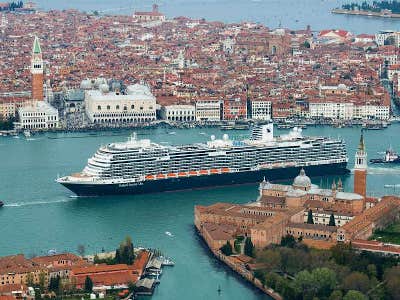
In spite of the reputation of cruises to be floating buffets, they can actually be an excellent way to visit a great number of amazing European cities in a short time. The ship typically is in port from the early morning until mid evening, often giving you the opportunity to have dinner in the city (unlike Caribbean cruises). Better still, the cruise ports are often near the center of town, so you can just walk off the ship and do sightseeing on foot or by public transportation.
Mediterranean cruises usually start at 7 nights but can go up to 3 weeks, which can provide an amazing tour of the entire region without having to pack and repack your bags more than once. They also can provide excellent value, especially compared to the price of taking trains or flights and finding new hotels in every destination.
Most popular Mediterranean departure ports
Barcelona, Spain – It’s an easy port to reach. Ships generally go from Barcelona with stops in France and then Italy.
Rome (Civitavecchia), Italy – The port isn’t very close to Rome, but it’s easy to get back and forth. Ships go west to France and Spain as well as south around the tip of Italy and then on to Croatia, Venice, and to Greece.
Venice, Italy – The cruise ships no longer dock close to the best tourist areas, but it’s easy enough to visit Venice for a day or two before boarding a ship. Ships starting in Venice go south and then head west and to Rome and then to France, or they go south to Croatia and then head east to Greece.
Athens, Greece – The cruise port of Piraeus is just south of Athens and easy to reach. Ships from Athens usually head west towards Croatia, Italy, France, and Spain, but there are also ships that visit Greek islands and Turkey.
>>> Check for deals on Mediterranean cruises
Alternative to consider: a river cruise
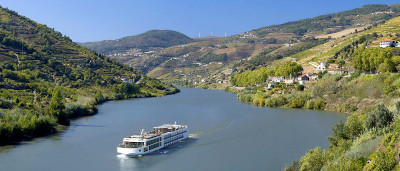
Amsterdam , Budapest , and Prague are some of the most popular river cruise ports, but there are dozens of others including many smaller towns in France where few other tourists will be when you stroll off the ship. There is little or no entertainment on the river cruise ships, but passengers don’t miss it because the entire day and into the evening is spent just steps from local cultural offerings and restaurants.
>>> Check for Europe and river cruise deals
Itinerary 5: France, Belgium, and Netherlands
- Paris (3 nights)
- Brussels and Bruges (1 or 2 nights)
- Amsterdam (2 or 3 nights)
Paris to Brussels: 1 hour 22 minutes Brussels to Bruge: 58 minutes Bruges to Amsterdam: 2 hours 45 minutes Amsterdam to Paris: 3 hours 17 minutes
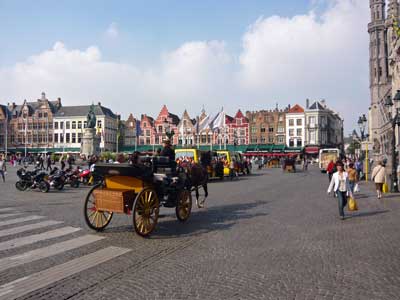
Spending 4 nights in Paris and 3 nights in Amsterdam would be a great trip, but if you want to see something else you’ve got a couple options in between. My advice is to spend an afternoon looking around the Grand Place (main square) in Brussels and then hop a 58-minute train ride to Bruges for a night or two. Brussels isn’t a great tourist city, but Bruges really is so it’s a better option for most people. Whatever you choose out of this group, you can be back in Paris on another high-speed train for your flight home.
Best add-ons to France, Belgium, and Netherlands
- Luxembourg City (1 or 2 nights)
- Cologne, Germany (1 or 2 nights)
- Interlaken, Switzerland (2 or 3 nights)
>>> Check Paris hotel deals >>> Check Bruges hotel deals >>> Check Amsterdam hotel deals
Itinerary 6: Paris and elsewhere in France
And a choice of:
- Normandy (2 nights)
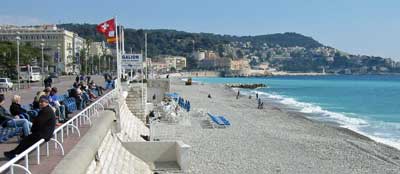
While Nice is a wonderful tourist city for a look at the French Riviera, the other larger cities of Lyon and Marseilles are probably better saved for a future trip because they are light on key sights compared to many smaller towns. Wine lovers can rent a car or take trains into Bordeaux or Burgundy. Since you can get between most of these towns by train in 2 hours or less, spending only 2 nights in each one is a reasonable option if you want to see a lot in a short time.
Normandy is an interesting choice and easy to reach in only about two hours by train from Paris. Some visitors like to see the famous WWII beaches and memorials, while others (especially in summer) like to check out one or more of the beach-resort towns. Deauville is one of the more famous of those, and it’s also famous for its horse race track and as one of the epicenters of the industry in Europe.
Best add-ons to Paris and elsewhere
- More France, of course
>>> Check Paris hotel deals >>> Check Nice hotel deals
Itinerary 7: Italy
- Rome (3 nights)
- Florence (2 or 3 nights)
- Venice (1 or 2 nights)
Rome to Florence: 1 hour 16 minutes Florence to Venice: 1 hour 53 minutes

Venice is small enough that you can see the main sights in about 24 hours, and it’s so insanely crowded that many people tire of it after about a day as well. It’s better to pay more for a hotel to be on the main island and visit quickly than to save money with a hotel on the mainland where you’ll be in crowds going back and forth as well. Florence is the most relaxing of the 3, and also a great base for side trips to Pisa, Siena, and Cinque Terre, just to name a few.
Going to Italy? Here are the best first-time Italy itineraries for 3 days to 2 weeks (in much greater detail)
Best add-ons to Italy
>>> Check Rome hotel deals >>> Check Florence hotel deals >>> Check Venice hotel deals
Itinerary 8: Spain
- Madrid (4 nights) (including day trip to Toledo)
- Barcelona (3 nights)
Madrid to Barcelona: 2 hours 30 minutes
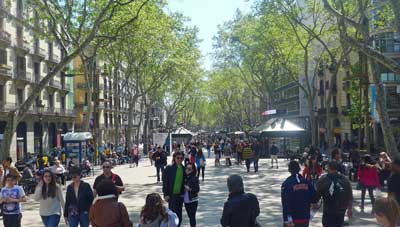
A huge part of Spain’s tourism industry is built around its southern beaches and islands such as Ibiza, Mallorca, and Tenerife (in the Canary Islands). For most people it’s best to ignore those places on your first trip because none of the beaches are special enough to spend days on them compared to the culture of the cities.
Best add-ons to Spain
- Valencia (2 nights)
- Seville (2 or 3 nights)
- Granada (2 or 3 nights)
- Lisbon (3 nights)
By popular demand, I’ve added a full article on where to go in Spain with itineraries from 7 to 10 days up to two weeks .
>>> Check Madrid hotel deals >>> Check Barcelona hotel deals >>> Check Lisbon hotel deals
Itinerary 9: Germany
- Berlin (3 nights)
- Munich (2 or 3 nights)
- Rothenburg ob der Tauber (1 night)
- Füssen (1 night)
Berlin to Munich: 6 hours 2 minutes Munich to Rothenburg ob der Tauber: 2 hours 56 minutes Munich to Füssen: 2 hours 4 minutes

Those two cities are the keys to a Germany visit, and after that you’ve got a wide variety of choices. I cover most of the popular choices in my article on where to go in Germany , which covers several smaller towns that are major highlights.
Best add-ons to Germany
- Cologne (1 or 2 nights)
- Hamburg (2 or 3 nights)
- Amsterdam (3 nights)
- Prague (3 nights)
- Salzburg (2 or 3 nights)
- Vienna (3 nights)
- Interlaken, Switzerland (3 nights)
- Lucerne, Switzerland (2 or 3 nights)
>>> Check Berlin hotel deals >>> Check Munich hotel deals
Itinerary 10: Switzerland
- Interlaken (3 nights)
- Bern (1 night)
- Lucerne (3 nights)
Zurich Airport to Interlaken: 2 hours 10 minutes Interlaken to Bern: 53 minutes Bern to Lucerne: 1 hour 50 minutes Lucerne to Zurich Airport: 1 hour 3 minutes
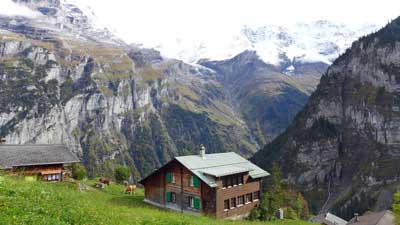
Interlaken is the best hub for the most dramatic Alps views and experiences. The one-hour cable car ride up to the Schilthorn observation deck is something you’ll never forget, and the only thing that might be more dramatic is the train ride up to the Jungfraujoch station, which is the highest in Europe. Lucerne is almost as beautiful with a scenic lake at its heart and also great mountaintop views nearby. If you do want to see a Swiss city then the capital of Bern is the most interesting and photogenic on a short visit. Read more about where to go in Switzerland for even more ideas.
Best add-ons to Switzerland
- Munich (3 nights)
- Italy (as long as you’ve got)
>>> Check Interlaken hotel deals >>> Check Lucerne hotel deals
Itinerary 11: Eastern Europe’s best cheap cities
- Budapest (3 nights) and/or
- Krakow (3 nights)
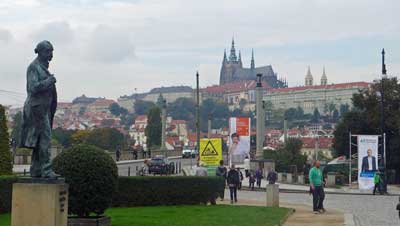
Each of these cities is beautiful and historic, but English is less widely spoken so they can also be quite a bit more challenging for a first-time visitor. Another difficulty is that the trains between them are still quite slow compared to the high-speed rail in the West, so it takes most of a day from one to another, and a bus is often a better choice. I cover this best cheap Europe itinerary more fully in the linked article.
Prague to Budapest: 6 hours 41 minutes Budapest to Krakow: 9 hours 54 minutes (flying might be better)
Best add-ons to cheap Eastern Europe
- Cesky Krumlov, Czechia (2 nights)
- Ljubljana, Slovenia (2 or 3 nights)
- Split, Croatia (3 nights)
- Belgrade, Serbia (2 or 3 nights)
- Sarajevo, Bosnia and Herzegovina (2 or 3 nights)
- Sofia, Bulgaria (2 or 3 nights)
>>> Check Prague hotel deals >>> Check Budapest hotel deals >>> Check Krakow hotel deals
OTHER POPULAR POSTS
Leave a reply cancel reply.
Your email address will not be published. Required fields are marked *
11 Best first-time Europe itineraries for 1, 2, or 3 weeks " --> All Comments
Hi Roger, was reading your article and reply to various questions and its actually too good and kind from you. if you pls,help me out a route plan for 15days. but my catch is, i have to start from Stockholm.i like to end in rome to head back home. in between what should be my plan?thanks
I’m happy to help. Stockholm to Rome could be done in 15 days, but it would require skipping quite a few great places along the way. My recommendation would be to choose 5 or maybe 6 cities total and spend 3 days in each. If Stockholm is one of your cities you’d only have 12 days left but even if Stockholm didn’t count on the 15 days I think it’s probably best to fly from Stockholm to a city closer to Italy and then do the rest of it on shorter train rides. You could do Stockholm to Copenhagen by train, but those are pretty long train rides and honestly those two cities are pretty similar to each other.
So maybe Stockholm and then a flight to Paris and then trains to Venice, Florence and Rome? That sort of thing. Stockholm is just so remote that it would require at least 3 or 4 longer train journeys but if you flew from Stockholm to Paris (or Berlin or Prague or Budapest or wherever) the remaining train rides would be relatively short. I hope this helps and let me know if you have any other questions. -Roger
Firstly, I would like to thank you for the article and itineraries; they are very helpful.
My wife and I are planning a 3 to 4-month trip around the EU (Western Europe). Before I delve into the specifics of our itinerary, I am wondering if the same 3 to 5-day in each-city principle applies for cases where travellers will spend more time travelling around?
I look forward to hearing from you. Thanks Raf
Wow. That sounds amazing! Even when traveling for longer periods like that I’d recommend a minimum of 3 nights in almost any place you go. The main reason is your travel days tend to be kind of long when you factor in everything from checking out of one hotel to getting to the train station and waiting and then the journey time and then getting to your next hotel and getting situated. All of that usually takes 4 to 6 hours even when the train journey is only an hour or two, so you just don’t get much sightseeing done on those days. So if you only stay 2 nights in each city it means every other day is a travel day and that just takes up too much time.
That said, I think 3 or 4 days is enough time in most places as well. If you really want to get to know Paris, for example, you might stay a week there. But for most cities there are diminishing marginal returns starting on day 3 or 4. In other words, you’ll be able to see the 10 things that most interest you in 3 days or so, and at that point you might be ready to see the Top 10 things in the next city instead of the #11 through #20 things in the first city.
Another thing that is important with longer trips like that is to plan some down time at least every few weeks. If you try to do sightseeing 7 days per week for weeks at a time it starts to feel like a job. What I like to do is every two or three weeks find a smaller town or cheaper place where I can rent a little apartment or some place larger and more comfortable than a typical small European hotel room. And I like to stop in places without many sights otherwise it’s too tempting to keep sightseeing every day.
I’ve actually done quite a few long trips like this and I’m happy to help with any other advice if you like. -Roger
Comment*We are planning on Athens to Amsterdam from June 4, 2024 to Amsterdam June 24th.
We are thinking trains to major cities inbetween Athens and Amsterdam. We are open to anything and everything.
Priorities: Parthenon in Athens, Art Museums in Amsterdam (3-5 days in Amsterdam) Can you help us?
That is a tricky one. Both Athens and Amsterdam are great and very worthwhile, but once you go north of Athens to Thessaloniki in northern Greece, the train service is spotty and very slow all the way until you reach Budapest. Strangely enough, buses tend to be faster and much more frequent in those “eastern” countries like Bulgaria and Romania. Also, being perfectly honest, most of those in-between cities such as Sofia and Belgrade are kind of dull by European standards, although they are quite cheap.
If you really want to visit Athens I’d definitely start there and then after a few days fly to Budapest or some other city in that area that interests you and then carry on from there by train. In fact, Athens to Budapest and then trains to Prague then Berlin and then Amsterdam could be perfect. You could even add in a couple of days in Cesky Krumlov near Prague if you want to include a gorgeous smaller town among the big cities.
Those are all first-class cities and several of them are quite affordable as well. I hope this helps and let me know if you have any other questions. -Roger
Hi, my wife and I would like to visit Rome, Florence, Italy, Venice, Prague, Berlin and maybe Switzerland. This will be the first time travelling to Europe and I would appreciate your help in planning where to start, where to stay, how to get there and where to go. We will be coming from Trinidad and Tobago for 2 weeks. If possible, i would like a day-to-day plan.
Unfortunately I don’t have time to do a day-by-day plan for you, but I can help get you started. If you’ve got 14 nights I would keep the list to 5 total cities. If you tried to include Switzerland on this trip it would mean spending only 1 or 2 days in some cities and that means spending every other day on trains.
I think the best thing to do would be to fly into Berlin or Prague and then spend 3 days there and then take a train to the other one and spend 3 days there and then fly to Venice. Spend 1 or 2 days in Venice and then take a short train ride to Florence for 2 days or so and then a train ride down to Rome for your final 3 days and then a flight home or back to your starting city if that is cheaper. I’m happy to help if you have any other questions. -Roger
Hi, Roger. My wife and I (56 and 63) want to do our first trip to Europe from Canada and would like to start by visiting Portugal (Lisbon and Porto) and Spain (Madrid, Barcelona, Valencia, Granada y Sevilla with day trips to close small cities in between). What it would be your suggestion for: 1. Stay in each city for a 15/17 days trip? 2. any additions/modifications? 3. Train over flights internally? 4. If we travel with one suitcase of 50 Lbs would it work to take public transit when required? 5. Instead of this plan, would it be better to visit 1/2 famous city in different countries? Would appreciate your inputs. Than you Roger
If you’ve only got about 16 days I’d recommend choosing 5 or maybe 6 cities in total. I strongly believe that 3 nights is the best amount of time to stay in each city so you have two full sightseeing days in each one, although some smaller cities can be done a bit quicker. I go over the reasons in detail on this other article about how long to stay in each European city , but the main point is that if you stay only two nights it means literally spending every other day on trains or in airports and such and you just don’t get much sightseeing done on those travel days with all of the packing and unpacking and checking in and out of hotels.
I’d definitely include Lisbon, Madrid, and Barcelona. You could add a 2-day visit to Porto and 2 or 3 days each in Sevilla and Granada. I’d save Valencia for a future trip. It’s nice, but aside from the new buildings clustered in one area, it’s more generic than any of the others on your list.
The only train between Portugal and Madrid goes over night and I’m not a fan of those so I’d fly on that leg. But from there I’d definitely take the high-speed trains, which are fast and comfortable. Buy your tickets at least a couple months in advance for the best fares.
There will be room for a 50 lb suitcase on the flights (of course) and on the trains as well. On older trains they have you put them on racks above the seats, but on most of the more modern ones (like the high-speed trains) they also have room for larger bags at each end of the carriage. If you can lift them, there will definitely be room for them.
I think your plan sounds really good and those are all great cities. That said, for most first-time visitors to Europe I’d recommend Paris and Italy as those are really more dramatic and interesting, although also more crowded and somewhat more expensive as well. I think once you do the Iberia trip you’ll be hooked and you’ll start planning a trip to France and Italy for the coming years. Let me know if you have any other questions. -Roger
Hi, Roger. Thank you for your comments and recommendations and also for your prompt response. I have modified my plan as I have now 22 days. My Itinerary is Porto(3), Lisbon(3), Seville(2), Malaga(2), Madrid(3),Barcelona(3), Zaragoza(2) and Bilbao(3). What do you think? is this a good plan? Any suggestions? I am still debating between Malaga and Granada though. I included Bilbao to visit friends. The question on the luggage was more related to the comfort to pull a large back in public transit than the allowance in the planes or trains. I will appreciate your inputs. Thank you again, Roger
Those six more days will help a lot. I think your new plan looks really good. You can probably enjoy Porto in 2 days and add an extra day somewhere else, but you might also be dealing with jet-lag so 3 days might be better. Your itinerary looks efficient and logical.
I really like Granada and Malaga, but I think if I were to choose between the two I would go with Granada. Malaga is (in my opinion) an underrated city that is close to some extremely popular beach towns and it’s got a lot going for it, but if you aren’t also going to be staying by the beach I think I’d save it for another trip. Granada has got the Alhambra and Generalife Gardens and those are unlike anything else in Spain or the world for that matter. Granada is small enough to enjoy in two days and I think seeing the Alhambra will be more memorable than anything in Malaga.
Buy your train tickets as early as possible for the best times and fares, and the flight for Lisbon to Seville (or you could take a bus).
And again, your 50 lb suitcase will fit on city to city trains (although not as well on buses or trams within a city), but still (as the saying goes) no one ever went on a trip around Europe like this and swore they would pack more stuff the next time. In other words, 40 lbs is much easier than 50 lbs and getting laundry done cheaply in a country like Spain is quite easy. Let me know if you have any other questions. -Roger
Comment*Hi travelling first time to europe next year we are 55 years age group any suggestions for 10-12 days itenary with guided tour would be nice if any suggestion are there also april or may better time to visit there anil
Actually, all of my best suggestions for first-time visits to Europe are in the article above. If you specifically want a guided tour you’ll obviously just be choosing from the ones that are available from the companies you look it, although many of those should resemble the itineraries in my article. Planning your own trip to Europe is actually quite easy, and especially if you are going to the classic and most popular cities. I’ve got lots of articles that could help you.
I’m not sure how many guided tours you’ve done, but one thing to consider is that they always move at the speed of the slowest person in the group. If YOU are the slowest person in the group then it’s fine, but if you are 55 then you should be much faster than most other people on a guided tour. For example, if you have a coach/bus tour for a day with 5 or 6 stops, you always have to wait for the slowest people to get on an off the bus. I’ve done countless day tours this way and it can be frustrating waiting 10 extra minutes many times each day as slow people are trying their best.
I think my top two best suggestions are London and maybe another stop or two in England and then Paris and other stop or two in France, OR, Paris then another stop in France and then Venice, Florence, and Rome. It obviously depends whether England or Italy sounds more interesting. Let me know if I can be of any other help. -Roger
Planning a family trip with a adult and nearly adult children. Hoping to be able to do 18 to 20 days. Must sees are Paris, Venice, England, and Prague but would adore seeing more! What route would you suggest and should we rent a car, fly, train, river cruise? There are so many options and I’m completely overwhelmed! A suggested itinerary would be amazing!! Thank you!
That sounds like a great start to a plan. As far as “England” is concerned it’s probably best to just think of it as 3 or probably 4 nights in London. With 4 nights you’d have enough time for a good day trip to Bath/Stonehenge and Windsor or to Oxford or even York, but London is big enough to keep you busy and it’s probably best to just stay there and then take the Eurostar train to Paris for 3 or 4 nights.
Prague is a bit out of the way, but you can fly there cheaply enough if you want and then after 3 nights fly to Venice. After 2 nights in Venice I’d take a train down to Florence for 2 nights and then another train to Rome for 3 nights. That would be just about a perfect 18 to 20 day trip including Prague. I definitely wouldn’t rent a car as they tend to be counter productive when visiting a string of large cities that have bad traffic and expensive parking. Your itinerary doesn’t really work with a river cruise at all, but hopefully you can plan one in the future.
It would probably be cheapest to fly from Rome back to London for your flight home (being careful of which of London’s 5 airports you fly into because your flight home will almost certainly go out of Heathrow), but if you can get a flight home straight from Rome for a good price, that would be even better. Getting around by train in Europe is by far the best way wherever it’s close and fast enough, so I’d focus on trains in the places I mentioned. I hope this helps and let me know if you have any other questions. -Roger
Yes, I meant London. Thank you for picking up on that. After reading though your site and many, many of these informative comments, I think I have figured out a basic itinerary and would love your feedback and suggestions!
-Fly into London London(3 days) -Eurostar Train to Paris Paris (3 days) -Train to Switzerland – unsure which train company Switzerland (3 days) -Train to Venice?? Venice (2 days) -Train to Florence – which train company? Is there a pass? Florence (2 days) -Train to Rome Rome (2 days) -Fly to Prague Prague (3 days) -Fly home out of Prague
Very interested to hear your feedback. I know you suggest 3 nights but I am ok with missing out on some things in Rome/Florence if needed. Would love train suggestions and if passes are best. NO idea on how the trains operate in Europe.
Thank you so much for your time!
This itinerary looks amazing. My only real suggestion would be to spend only one day in Venice and three days in Rome, or at least a day and a half in Venice rather than two, but you’ll enjoy it no matter what. The thing is that Venice is about the size of a theme park like Disneyland and from 9 AM until 5 PM it feels even more crowded than Disneyland. It’s absolutely amazing, but also easy to get tired of the crowds and you’ll do your best sightseeing in the mornings before the day-trippers come and in the evenings after they’ve left. And Rome is huge with a long list of really cool sights so with only one full sightseeing day you’ll miss quite a few of them. But again, you’ll enjoy it no matter how you divide your time.
In most of Europe including between France and Switzerland and Italy, there is just one rail company per country so just book whatever comes up. From Paris to Basel, Switzerland you’ll take the France national service and then change trains to a Swiss train for your ride to Interlaken or Lucern. Then from Switzerland you’ll take (probably) a Swiss train to Spiez or Brig and then change there for an Italian train to Venice. You’ll buy it just as one ticket and it’ll include all the legs required to get from one city to your final city, and usually come with seat reservations as well (except in Switzerland).
My favorite site for checking schedules all over Europe is the Trainline . But you can also check the official rail sites of each country involved and I’d definitely check those prices before booking anything. My article on buying European train tickets in advance is still pretty much up to date and it has links to the various national train companies.
It will be cheapest if you lock in your dates and buy all of your train tickets as early as possible, which will be around 3 months out in most cases. The tickets start off really cheap and go up in price as more seats are sold on each train, so earlier is always better. There are no rail passes that would be helpful on a trip like this, but that’s mostly because the tickets will be pretty cheap already, especially the ones within Italy.
Trains in Europe are really fun and shockingly easy once you get started. All the important signs will be in English as well as a local language. For most of them you can literally walk aboard just before it leaves and you are fine as long as you have a reserved seat, but the Eurostar works more like a flight with security and such so you have to be checked in at least 30 minutes in advance. Let me know if you have any other questions.
I won’t have time to update that other older article about trains vs planes vs buses, partly because these days there is a clear choice depending on which two cities you are going between. There are places in eastern Europe where there are advantages to each mode, but for the cities you’ll be doing the train is going to be the fastest, by far the most enjoyable, and probably the cheapest as well, at least once you factor in airport transportation costs. It’s going to be a great trip! -Roger
Thank you SO much for all of your help. Your in-depth website is an amazing resource! I get so lost in it and spend hours scouring your resources and links – it has everything anyone could need! And, the fact that you are also personally answering comments and offering personalized advice is mind blowing! Thank you for all that you do to inform us!
If you could suggest on a 14-15 day iterinary covering Athens, rome Milan paris London and Finland from New Delhi / Mumbai.
If you have 14 to 15 days I’d suggest choosing about 5 cities in total to visit. So your list should work out fairly well, although it depends on how much of Finland you’d hope to see. I’m guessing you must have a specific reason for wanting to go there? Finland normally isn’t very popular and honestly there isn’t much to see. Helsinki is, in my opinion, the least interesting of the Nordic capitals, although it’s pleasant enough and the country has some nice forests. If you are visiting relatives or something, that requires different planning of course.
It might be easiest to fly from Mumbai to London and then use that as a base. You could spend a few nights there and then fly to Helsinki and back after that or Helsinki to Paris for a few days. After Paris you could fly to Milan or Rome and then take a train to the other and then fly to Athens to finish your trip.
Milan actually isn’t a popular tourist city. It’s the home of most of Italy’s big banks and fashion brands, but neither of those are accessible to most tourists. Italy has amazing fashion shopping in Rome as well as Florence. Venice is also more popular. I hope this helps and I’m happy to help more if you have questions. -Roger
Comment* Planning first trip to Europe Want to do tour of England, Scotland, Wales and then to Paris for sites and Monet Gardens. Might take train to Brussels and Bruge. Then to Switzerland and home. Any suggestions what tour group to contact. Want slower pace trip…at least 3 weeks. Thank you.
I enjoy helping people plan independent trips, and I honestly don’t know much about booking all-inclusive tours like you are after. I’d imagine you’d have to do at least a few different tours to cover all the places you have in mind. The one outfit that I am familiar with is Rick Steves, who I am a huge fan of for his Europe travel guides and I know he has a big tour organization. I’d start with them and see if they have anything that fits what you are looking for. Best of luck. -Roger

- Adventure Travel

11 Cheap Ways to Travel Abroad

Courtney is from a small, touristy town in southern Maine, but is now living in New Zealand. Some...
- button]:border-none [&>button]:bg-white [&>button]:hover:cursor-pointer [&>button]:hover:text-cyan-400"> button]:hover:text-cyan-400 [&>button]:bg-white hover:cursor-pointer" height="1em" width="1em" xmlns="http://www.w3.org/2000/svg">
Didn’t think there were cheap ways to travel abroad? Think again! If you won the lottery, imagine all of the amazing things you’d finally get to do. Take a trip to see the cherry blossoms bloom in Tokyo, go snorkeling with sea turtles in Bali, explore the hidden wonder of Machu Picchu in Peru, or get up close and personal with the wildlife in Tanzania. The world would seem limitless.

Behold: Brilliant ways to save money while traveling!
Now imagine being able to do all of that without winning the lottery. Crossing off every location on your bucket list shouldn’t cost an arm and a leg, and, guess what: it doesn’t have to. With our budget travel tips, you can visit to every corner of the globe—from the Greek Isles, to Melbourne, to Buenos Aires and back again—on a budget that suits you. Traveling isn’t just for the rich anymore, my friend!
So, look no further; we’re here to help you navigate balling on a budget.
Here are the 11 BEST ways to travel cheap
Believe it or not, there are cheap ways for students to travel. In fact, there’s cheap ways for everyone to travel! With a little flexibility and a bit of know-how, you’ll be able to save money traveling like it’s nobody’s business. Sadly, none of these tips will get you traveling for free, but they’ll definitely help you cut costs where it counts.

One of the most tried and true budget travel tips? Use public transpo!
1. Travel with Friends
There’s no one better to share your travel adventures with than all of your BFFs. Your group chats are already consumed with talk of fun and different ways to travel, so why not turn it into a reality? This is one of the best ways to save money while traveling, because you can split all the costs. Groceries, accommodation, activities, car rentals; all of it gets so much cheaper the more people you have. Grab your friends and get planning!
2. Try Couchsurfing
Wanna spend your vacay surfing it up on the Brazilian coastline but can’t afford a hotel room with an ocean view? Take up another kind of surfing: couchsurfing . Locals open their doors to tourists looking for a cheap place to stay. They can also tell you all about the lesser-known gems across the city: from cute, hole-in-the-wall restaurants to the quietest beaches for your early morning surf. You’ll have access to a wealth of knowledge that isn’t available at a hotel and save a ton of money on accommodation.
3. Look Into Programs to Volunteer Abroad
Volunteering helps the community and the planet and it’s good for your soul. Take your mission overseas with a volunteer opportunity abroad. There are so many programs and causes out their, so you’re sure to find something that works for you. Not only is this a different way to travel, it’s also great for budget travelers, because, although you usually have to pay to join the program, that will cover your accommodation, meals, and lots of other costs.

Budget ahead of time for your non-negotiable “must have adventures,” then work backwards to determine your daily spend.
4. Get a Part Time Job While You’re Away
Maybe budget travel isn’t for you and you’d rather live like they do in the movies; settle in Sydney for the summer and catch some rays or take an extended siesta in Barcelona over Christmas break. Whatever your prerogative, a part time job is a good way to fill the gaps in your finances without sacrificing comfort or must-do activities. If you’re on a visa that lets you work and you’re happy to stay in one spot for a bit, talk to a local temping agency about finding a short term role. You’ll make some money and add some cool experience to your resume!
5. Search for Budget Travel Destinations
“Budget” doesn’t have to mean “not worth visiting”! In fact, many countries with lower costs of living can be great places to stop, get off the beaten path, and save some money. Beautiful countries like Colombia, Bosnia, Portugal, Sri Lanka, and many others are safe, unique, and affordable places to travels, even if you’re going solo. Generally speaking, food, transportation, and accommodation are cheap, so you can save your money traveling here and spend it on pricier destinations later.
6. If You’re in College (or High School!), Study Abroad
You probably wouldn’t expect studying abroad to be included in a list of budget travel tips, but it can be done! Depending on the school and location, study abroad programs can be the same price or cheaper than a semester at your home university. Going with one of the budget travel destinations listed above is a good place to start looking, as countries with lower costs of living are ideal for studying abroad. There are tons of scholarships available too, so it can definitely be one of the cheap ways for students to travel.
- Check this out: Affordable study abroad programs with CISabroad
7. Stay with Relatives Who Live Overseas

Some of your best travel memories won’t cost you a darn thing <3
Does your cousin live in Germany? Or maybe your mom’s step-sister’s uncle’s son lives in Japan? If you’ve got a relative living abroad, that is the perfect excuse for you to stop by on your budget travel adventure. You’ll get to visit your family and save money traveling. We’re talking free accommodation, free meals, insider tips, and your own personal, bona fide tour guide. It really doesn’t get much better than that!
8. Intern Abroad and Gain Experience
Taking a lengthy break from work and studying to travel may not suit everyone. So, interning abroad is a good alternative for a career-driven person looking for a different way to travel. Programs can set you up with the perfect site in whatever country you want for whatever duration works for you. Interning can even be a cheap way to travel abroad in countries that aren’t exactly budget travel destination, like Sydney or London. Despite the program price tag and cost of living, you’re gaining valuable experience and international connections.
- Check this out: Intern Down Under with Intern OZ
9. Go for an All-Inclusive Package
All-inclusive getaways aren’t just for grandparents going on cruises around the Florida Keys. From bus tours around Asia to island-hopping adventures in the Mediterranean, these programs can be a good way to save money traveling, no matter your age. Again, opting for lesser-known locations during the off season is your best bet to save extra money. But, even if you end up going with a more expensive option, meals, accommodation, transportation, and activities are usually discounted, if not completely covered with these packages.
10. Travel During Off-Peak Times

Remember to document all of your adventures—a full photo roll is free!
Traveling to Europe over summer break may sound like a dream, but if we’re talking about cheap ways to travel the world, you may be better off going at off-peak times. Usually, that will mean winter or fall, depending on where you’re going. But hey, walking around snow-covered streets in Prague wouldn’t be so bad either! Do your research; finding the less popular times to visit your budget travel destination is one of the easiest ways to travel cheap.
11. Apply for Teach Abroad Programs
Whether you have teaching experience or not, teaching abroad is a cheap way to travel somewhere you’ve always wanted to go. You can get paid a pretty generous salary, learn some new skills (that will make your resume shine!), and spend a long time overseas. Some programs even cover your housing, meals, or airfare! If you’re passionate about teaching and are willing to learn, this can be a really cheap way to travel the world.
- Program suggestion: Teach English in China with Premier TEFL!
[ Keen on budget travel? View ALL Teach Abroad Programs Available Now ]
Bonus budget travel tips to help you save money.
- Cook your own food. Enjoying the local food is part of the traveling experience, but it can make a serious dent in your wallet. Try to go grocery shopping and cook most of your meals at your accommodation and only eat out every now and then.
- Sign up to get frequent flyer miles. The best way to fight off jet lag? Knowing you got your ticket for free. If you know you’ll be flying a lot while your away, signing up for frequent flyer miles early on will help you save money in the long run. They’ll also email you about any deals they have going on so you can snap up cheaper tickets!
- Try not to use your card overseas. Foreign transaction fees can really eat through your money. Talk to your bank before you go to see if they have partnerships with any foreign banks that can help cut back on fees. If you decide to take out cash at an ATM to pay for small purchases, make sure you store it someplace safe!
- Be minimalistic. Pack light. This may seem impossible, but, by not bringing two huge suitcases, you’ll limit the amount of souvenirs and novelty things you’ll purchase, because you simply have no where to put it. That way, you’ll save money and only buy things that you really value.
- If you’re staying for a while, find long-term accommodation. So, you’ve fallen in love with a Venice and want to stay and work for a while? Great! Avoid staying in hotels or traditional hostels, which can be pricey when you stay for weeks on end, and opt for long-term hostels or shared apartments. It’s a great way to meet people without blowing through your money!
You’re ready to take on the world without taking out a loan!

Cheers to you having the time of your life! Just remember all the cheap ways to travel abroad
If traveling the world always seemed like an impossible dream, now is your time to go. Whether you’ve wanted to visit Paris since you were twelve or you just know that you need to take a vacation somewhere, everyone deserves to travel every now and then, no matter your budget. And trust us, it can be done for less money than you’d expect, especially if you follow our tips.
Take your time and shop around for a good deal; they may not always be easy to find, but they’re out there waiting for you. Once you’re sitting on that plane, all the hard work and planning will be completely worth it. Happy vacationing!
Get Matched with 5 Travel Abroad Programs for FREE
Look for the Perfect Adventure Travel Program Now
Related Articles

By Farryl Last | June 6, 2024
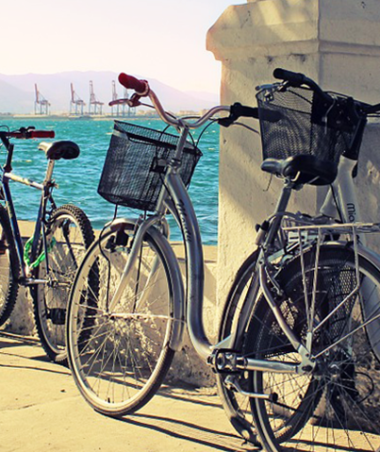
By Julia Zaremba | June 6, 2024

By Jacquie Truckey | June 6, 2024

By Steph Dyson | May 30, 2024
Popular Searches
Recommended programs.

1709 reviews
International Volunteer HQ [IVHQ]

Seville Abroad

2142 reviews
MAXIMO NIVEL

National Outdoor Leadership School
Top Adventure Program Providers
Popular opportunities to check out
Join ethical small-group adventure tours in Uganda
Come join us on the ultimate horseback holiday adventure, join us on our exceptional photographic journeys with a do-good twist.

Subscribe to our newsletter
Travel resources, for partners, connect with us.

© Copyright 1998 - 2024 GoAbroad.com ®
- Study Abroad
- Volunteer Abroad
- Intern Abroad
- Teach Abroad
- TEFL Courses
- Degrees Abroad
- High School Abroad
- Language Schools
- Jobs Abroad
- Online Study Abroad
- Online Volunteer Programs
- Online Internships
- Online Language Courses
- Online Teaching Jobs
- Online Jobs
- Online TEFL Courses
- Online Degree Programs

IMAGES
VIDEO
COMMENTS
1: Patience Is ImportantPatience is my top travel tip. Don’t sweat the stuff you can’t control. Life is much too short to be angry & annoyed all the time whil…
1. Travel Slowly (Easiest Way to Travel Cheap!) It may seem counteractive but the easiest way to travel cheap is to travel longer and slowly. Because if you aren’t moving then you are not spending money on expensive …
Airfare, high-speed and overnight trains, ferries — they all eat into your limited (and precious) travel budget. Fortunately, there are alot of ways to get around Europe …
Planning your first visit to Europe? Here are 11 great starter itineraries with the most popular add-on options to create your dream trip.
We’ve collected 75 tips to help your travel budget stretch a little more so you can travel cheaply but still have an amazing trip. There are tips about finding cheap flights , saving money on accommodation, taking …
Take a trip to see the cherry blossoms bloom in Tokyo, go snorkeling with sea turtles in Bali, explore the hidden wonder of Machu Picchu in Peru, or get up close and personal with the wildlife in Tanzania. The world …